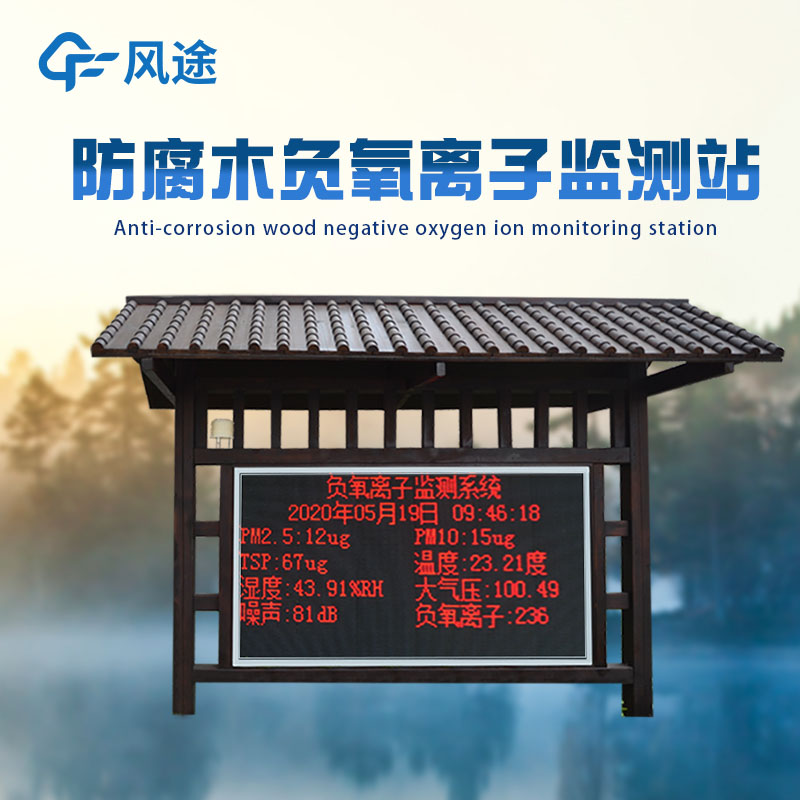Shandong Fengtu IOT Technology Co., Ltd
Sales Manager:Ms. Emily Wang
Cel,Whatsapp,Wechat:+86 15898932201
Email:info@fengtutec.com
Add:No. 155 Optoelectronic Industry Accelerator, Gaoxin District, Weifang, Shandong, China

Sales Manager:Ms. Emily Wang
Cel,Whatsapp,Wechat:+86 15898932201
Email:info@fengtutec.com
Add:No. 155 Optoelectronic Industry Accelerator, Gaoxin District, Weifang, Shandong, China
time:2024-11-26 09:19:12 source:Weather Station viewed:278 time
In an era when tourism is booming, tourists are no longer satisfied with just beautiful scenery. They are paying increasing attention to the environmental quality of scenic spots, especially the air quality. Thus, the negative oxygen ion monitoring system has become an indispensable part of modern scenic area construction.
Negative ions are of great significance to human health. They can improve respiration, boost metabolism, enhance immunity, relieve fatigue, and so on. Many scenic spots are rich in negative ions due to their superior natural conditions. For example, the tropical rainforest in Xishuangbanna, with its abundant vegetation, has become a natural "production site" for negative ions.
This monitoring system mainly operates with the cooperation of several major components. The monitoring sensor is responsible for accurately detecting the concentration of negative ions. For instance, a high-precision photoionization sensor can quickly and accurately obtain data. The data collection and transmission module transmits the data from scattered monitoring points to the processing center through wired or wireless means. In some large mountainous scenic spots, 4G or Internet of Things technologies are used. The data processing center stores and analyzes the data, generates reports and charts, and can also issue warnings according to the set thresholds. The display and release terminals allow tourists to know the information intuitively. For example, Emei Mountain Scenic Area has set up display screens in tourist gathering places to present the negative ion concentration and air quality in real time. Some scenic area mobile apps also provide such information.
Jiuzhaigou Scenic Area has optimized its tour routes based on the negative ion concentrations in different areas with the help of the monitoring system, guiding tourists to places with better air quality, which has been highly praised. Shennongjia Scenic Area has carried out ecological education activities using the monitoring data, popularizing the relationship between negative ions and the ecosystem among tourists and enhancing their environmental protection awareness.
The negative oxygen ion monitoring system plays a crucial role in enhancing tourists' travel experiences, promoting the ecological protection and management of scenic spots, and other aspects. It not only provides tourists with an intuitive reference for air quality, helping them better plan their tour itineraries, but also prompts scenic area managers to attach more importance to the maintenance and optimization of the ecological environment, realizing the positive interaction and coordinated development of tourism and the ecosystem. It has already become an important supporting force in the process of high-quality operation and sustainable development of modern scenic spots.

What is the meaning of water and rain situation? In fact, the water and rain situation refers to the water and rain situation. Water condition refers to the condition of river water, such as river flow, water level, flow rate, etc.; while rain condition refers to the condition of rainfall in a certa...
In our daily life, we often encounter severe weather such as haze and patchy fog. During these times, the atmospheric visibility is extremely low, just like a veil covering our eyes. It's a very unpleasant feeling, and such conditions are also prone to causing traffic accidents. So, is there a w...
Plant Growth Monitoring is a pole-mounted online monitoring device that can simultaneously and in real-time detect key parameters such as water temperature, conductivity, pH, and dissolved oxygen. This device integrates multiple sensors, avoiding the need for dispersed deployment of single-parameter devices, significantly improving water quality monitoring efficiency and data correlation, and comprehensively assessing water environmental quality. It is suitable for monitoring drinking water, industrial, and irrigation water sources....
The combination of carbon fiber support and portable design has brought about performance improvements for the Portable Meteorograph. In the field of outdoor meteorological monitoring, the stability, durability, and portability of equipment directly affect the accuracy of monitoring data and operati...